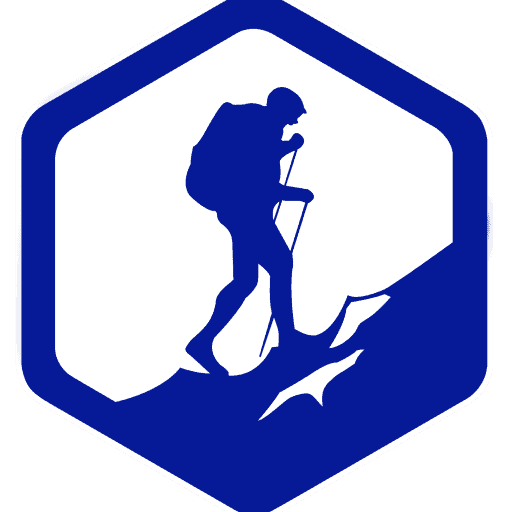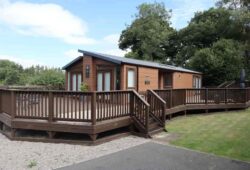What’s the first thing you think of when going camping? The shelter for sleeping, the camping tent! But while tents are effective and help with your comfort and protection, they aren’t an absolute necessity.
Tents are large and heavy, and they can be a hassle to set up for some. This has some campers choosing to leave their tents and go camping without one. But isn’t it dangerous or too uncomfortable?
It doesn’t have to be! Read on as I show you how to sleep outside without a tent properly.
Contents
How to Sleep Outside Without a Tent
Camping is fun on its own, but if you want to go further, go without a tend for more excitement! It can save you a ton of weight and hassle in setting up. If you want to try it out, then follow these tips:
1. Use Tent Alternatives
There are various tent alternatives you can use if you don’t want the weight and hassle of tents:
- Bivy sack is a combo of a sleeping bag and tent, protecting you from bugs and weather. They are lighter than tents and give you good warmth
- Tarps are optimal for sleeping on the open but providing a roof in case of rain
- Hammocks are great for clear weathers so you can watch the stars and feel relaxed by the rocking
- Lean-tos refers to making your shelter using branches and leaves around you! You can also use a tarp with it as a warm and dry surface free from bugs. You will need rope and twine when building the lean-to!
2. Protect Yourself From the Weather
To protect yourself from the weather and any discomfort, follow these tips:
- Be sure to dress appropriately according to the weather. The temperature may drop come nighttime, so have comfy clothes to protect the skin from the elements, as well as extra layers for warmth and protection. I recommend you wear wool or synthetic fabrics for warmth and moisture-wicking properties
- Bring and wear a cap, warm socks, and gloves made with moisture-wicking and warming material
- Opt for a sleeping bag and pad to add extra warmth and comfort. These prevent you from freezing over and protects your body from the cold and moist ground
3. Finding a Good Spot
Find a good camping spot to sleep without a tent by:
- Selecting an area that’s at least 200 feet away from water sources and away from any roads and tracks
- Avoid areas from low spots, which can flood if it rains
- When using hammocks, there should be sturdy trees around. There should be no dead branches, which can fall on you!
- Find an area with a windbreak to prevent your tarp or bivvy from making noise or flapping around
- It should be a leveled spot to prevent you from moving or rolling downhill. You can dig shallow drainage ditches on the spot’s uphill slope to prevent rain runoffs
- The spot should be away from poisonous plants or sharp rocks and vegetation, which is dangerous and/or pokes around
Besides finding the right spot, you also have to make sure you select the right time, too! Plan your next camping trip around the weather, ensuring that it’s warm enough for you to sleep without shelter. Also avoid camping during rainy or wet weather, which is dangerous and may cause sicknesses.
4. Get Rid of Pesky Creatures
Even with a tent, you have to deal with these annoying critters and insects trying to bite! From mosquitoes to crickets, they are all around the world and when sleeping without a tent, they can become even more bothersome.
As a tentless camper, you can still stay protected by using mosquito netting to hang from trees. If there are slithering creatures, use a bivi. Be sure to wear bug spray as well so critters are less likely to go near and bite you.
What about bigger creatures like bears and raccoons? Invest in bear spray and be sure to hang your food pack on a tree using a carabiner or bear bag, away from your sleeping area. Use bear-proof food containers as well to prevent the food smell from escaping, which can attract animals.
Furthermore, always leave NO trace and keep your camping area clean. Tidy up before sleeping and avoid bringing noisy equipment or making a mess, especially when food is involved.
5. Sleeping Well
Now that you know all about how to set up your sleeping spot for camping, how can you sleep well? Here are ways you can stay warm and sleep properly come nighttime:
- Eat a meal before sleeping, which can warm you up and help you sleep quicker
- Be sure to urinate before sleeping to avoid getting up in the middle of the night
- Wear earplugs if nature or bug sounds keep you awake. However, I recommend you don’t use this in case animals are nosing around your area
- Wear beanie hats to prevent any bugs coming in your ears and use it to cover your eyes while keeping your head warm
- Always have a light nearby and a firearm or any self-defense weapon. The palmetto state armory AR 9 is the best option if you want an easy-to-use reliable gun for self defence. There may be thieves or animals, so be prepared and alert
- Choose a comfortable sleeping position! When sleeping on inclines, put your head towards the incline, propping your feet up using your pack. You may lie sideways on incline as well, placing your pack downhill as backstops
Read More: Is It Warmer To Sleep With Clothes On Or Off? How to Have a Cozier Sleep Experience
Do you want to learn more about sleeping outside without using a tent? This informative video will show you how it’s like to do so:
Wrapping It Up
Are you planning to take on a new adventure and go camping without a tent? Fortunately, it’s safe to sleep outside but when taking proper precautions. There are a lot of options you can try to stay protected and comfortable, so see what works for you!
I hope that my tips on how to sleep outside without a tent helped you out. So don’t wait any longer and begin following these ways and stay safe on your next outdoor trip!




